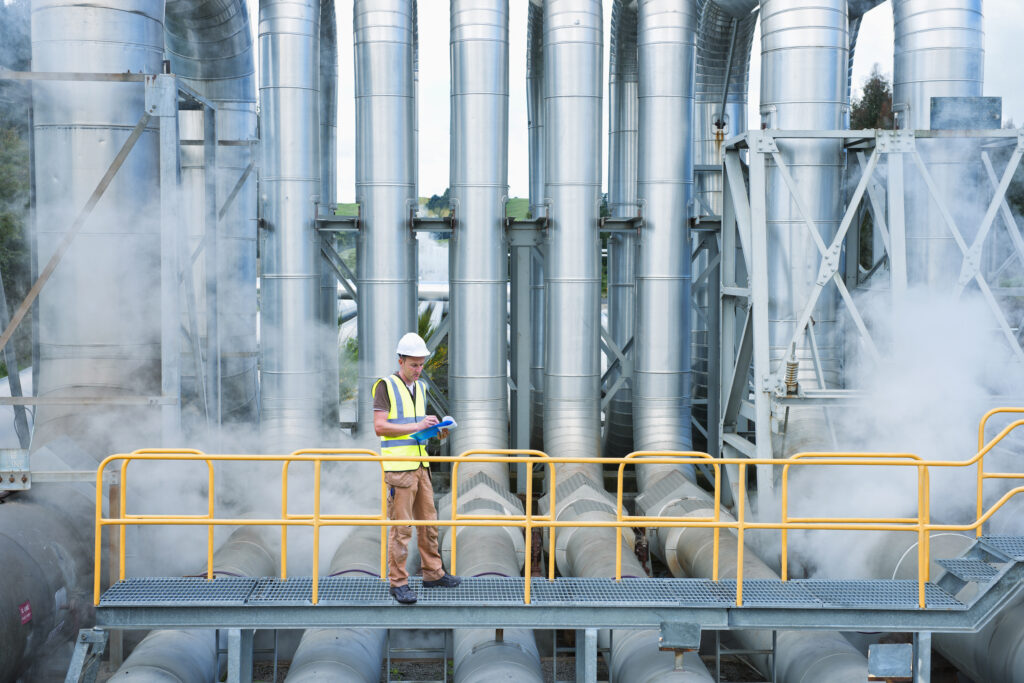Industrial Applications of Bioremediation
Bioremediation Products Transforming Commercial Applications

In the pursuit of sustainable solutions to environmental challenges, bioremediation has emerged as a powerful tool, revolutionizing the cleanup process of pollutants. By harnessing the natural abilities of microorganisms, bioremediation products offer efficient and eco-friendly alternatives for wastewater management, sewage treatment centers, airports, municipal buildings, cruise ships, food processing, and other commercial sectors. In this article, we explore the diverse applications of bioremediation products in commercial settings and their role in promoting environmental sustainability and operational efficiency.
Understanding Bioremediation
Bioremediation is a process that utilizes living organisms, such as bacteria or microbes to degrade or neutralize pollutants in the environment. In the context of wastewater management and sewage treatment, bioremediation involves the use of microorganisms to break down organic matter, remove nutrients, and eliminate harmful substances from wastewater. These microorganisms play a vital role in transforming complex pollutants into simpler, less harmful compounds through biochemical processes.
Key Mechanisms of Bioremediation
Biodegradation
Microorganisms metabolize organic pollutants present in wastewater as a source of energy and carbon. Through enzymatic reactions, these microbes convert complex organic compounds into simpler molecules, such as carbon dioxide and water, which are less harmful to the environment.
Nutrient Removal
Certain microorganisms have the ability to assimilate nutrients like nitrogen and phosphorus from wastewater, which are often present in excessive amounts due to human activities such as agricultural fertilizer. By utilizing these nutrients for growth, microorganisms help reduce the nutrient load in wastewater, preventing eutrophication of water bodies.
Detoxification
Some microorganisms possess enzymes capable of detoxifying hazardous substances, including heavy metals and industrial chemicals, by transforming them into less toxic forms. This detoxification process is crucial for ensuring the safety of water resources and protecting aquatic ecosystems.
Benefits of Bioremediation
1. Environmentally Friendly: bioremediation relies on natural processes and organisms, minimizing the use of harsh chemicals and reducing the carbon footprint associated with wastewater treatment.
2. Cost-Effective: compared to conventional treatment methods, bioremediation is often more cost effective, making it a financially attractive option for municipalities and industries.
3. Versatility: bioremediation can be tailored to target specific contaminants and adapted to various wastewater treatment scenarios, offering flexibility and scalability.
1. Sewage Treatment Centers & Other Municipal Applications

Traditional methods of treating wastewater often involve expensive infrastructure and chemical treatments, which can have detrimental effects on ecosystems and human health. In contrast, bioremediation harnesses the power of microorganisms to naturally degrade contaminants, offering a cost-effective and environmentally friendly alternative.
FOG – Fats, Oils & Grease
Cost effectiveness, worker safety, and environmental impact are all key concerns for wastewater treatment facilities when choosing methods to treat and degrade contaminants. Especially when tough materials like grease, oils, animal fats, vegetable greases, starches, and lipids build up on pipes, lift or pumping stations. Traditionally, harsh chemicals were the solution to break down the resilient buildup. However, this presents challenges with the frequency of chemical cleaning, the exposure of workers to these often toxic treatment methods, and the negative impact on nearby environments. These all result in long term recurring costs that can be mitigated with bioremediation solutions.
Microbe oil and grease eating products will help reduce FOG buildup and keep your wastewater systems clean long after treatment. Save countless hours of expensive cleaning and help prevent costly repairs. Products specifically like SEP-700 can be used to remediate all petroleum hydrocarbons.
2. Bioremediation for Airports
Fuel Spill Remediation

Airports and municipal facilities are essential components of modern infrastructure, serving as hubs for transportation, commerce, and community services. However, these facilities also generate various forms of pollution and environmental challenges, including soil and groundwater contamination, wastewater management issues, and waste disposal concerns. In recent years, there has been a growing recognition of the need for sustainable practices in these sectors. Bioremediation, a natural process that utilizes microorganisms to degrade pollutants, presents a promising solution for addressing environmental concerns in airports and municipal facilities while promoting eco-friendly practices.
Airports are susceptible to fuel spills from aircraft, vehicles, and fuel storage facilities, leading to potential soil and groundwater contamination. Bioremediation techniques, such as bioventing and biosparging, introduce oxygen and nutrients into contaminated soil and groundwater, stimulating the growth of indigenous microorganisms capable of degrading hydrocarbon pollutants. This approach accelerates the natural remediation process, restoring contaminated sites while minimizing disruption to airport operations. Airports can sometimes run into potential diesel, gasoline, motor oil, transmission fluid, and jet fuel spills with considering the volume of vehicles and maintenance operating onsite to ensure passengers arrive safely to their destinations. Bioremediation products can often be used to tackle all of these issues, in addition to the human elements such as wastewater or commercial kitchen facilities at the terminals and lounges.
Deicing Fluid Management
Deicing fluids used to remove ice and snow from aircraft can contain toxic chemicals that pose environmental risks if not properly managed. Bioremediation offers a sustainable solution for treating spent deicing fluid runoff and contaminated wastewater. Microbial treatment systems can break down organic contaminants present in deicing fluids, reducing their environmental impact and ensuring compliance with regulatory requirements.
3. Cruise Ships & Maritime Applications

The cruise ship and maritime industries play a vital role in global transportation and commerce, but they also face significant environmental challenges, particularly concerning wastewater management and pollution control. With growing concerns about marine pollution and its impact on marine ecosystems, there is an greater need for sustainable solutions. Bioremediation, a natural process harnessing the power of microorganisms, presents a promising approach for mitigating pollution in these industries while promoting environmental stewardship and sustainability.
Wastewater Treatment
Cruise ships generate large volumes of wastewater containing organic matter, pollutants, and potentially harmful substances. Bioremediation systems onboard can utilize microbial processes to break down organic pollutants and remove nutrients, thereby reducing the environmental impact of wastewater discharge. These systems often incorporate bioreactors, microbial filters, and biological treatment units to facilitate the degradation of contaminants. Additionally, manufacturers like SpillAway have developed products that eat grease, oils, animal fats, vegetable greases, starches, and lipids from industrial systems. To learn more about these products and their specific benefits, visit our shop to explore the right solution for your application.
Ballast Water Management
Ballast water discharge from ships can introduce invasive species and pathogens into marine ecosystems, posing significant ecological risks. Bioremediation techniques, such as bioreactors and UV sterilization coupled with biological treatments, can help neutralize harmful organisms present in ballast water before discharge, preventing the spread of invasive species and preserving biodiversity.
Oil Spill Remediation
Accidental oil spills, especially with the increasing global threats of crude oil spills, pose a serious threat to marine environments, impacting marine life and coastal ecosystems. Bioremediation strategies, such as the use of oil-degrading microbes and nutrient additives, can enhance the natural degradation of oil in seawater, accelerating the cleanup process and minimizing environmental damage. These microbial-based approaches offer a more sustainable and environmentally friendly alternative to chemical dispersants and mechanical cleanup methods.
Bioremediation products harness the natural abilities of microorganisms to address environmental challenges and promote sustainability across various commercial applications. From wastewater management and sewage treatment centers to airports, cruise ships, and industrial facilities, these products offer eco-friendly alternatives to traditional treatment methods, reducing environmental impact and operational costs. By embracing bioremediation technologies, commercial enterprises can enhance their environmental performance, meet regulatory requirements, and contribute to a healthier and more sustainable future for our planet.
Article Sources
University of San Francisco. “Mycoremediation: How Fungi Can Repair Our Land. https://usfblogs.usfca.edu/sustainability/2022/02/03/mycoremediation-how-fungi-can-repair-our-land/“
National Institute of Health. “Oil Biodegradation and Bioremediation: A Tale of the Two Worst Spills in U.S. History. https://www.ncbi.nlm.nih.gov/pmc/articles/PMC3155281/“

